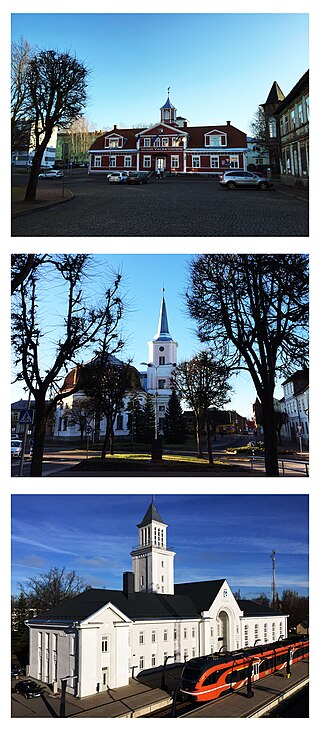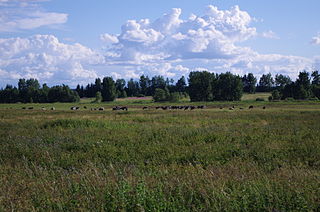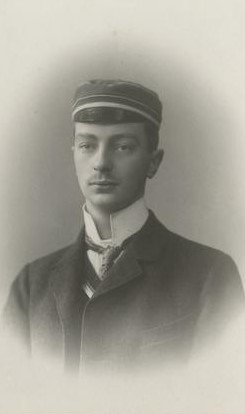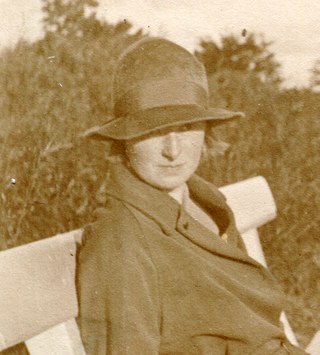Related Research Articles

Tartu is the second largest city in Estonia after Tallinn. Tartu has a population of 97,435. It is 186 kilometres southeast of Tallinn and 245 kilometres northeast of Riga, Latvia. Tartu lies on the Emajõgi river, which connects the two largest lakes in Estonia, Lake Võrtsjärv and Lake Peipus. From the 13th century until the end of the 19th century, Tartu was known in most of the world by variants of its historical name Dorpat.

Valga is a town in southern Estonia and the capital of Valga County and Valga Parish. Until their separation in 1920, Valga and the town of Valka in northern Latvia were one town. They are now twin-towns. The area of Valga is 16.5 square kilometres and that of Valka is 14.2 km2 (5.5 sq mi). Their populations are respectively 12,261 and 6,164. On 21 December 2007 all border-crossing points were removed and roads and fences opened between the two countries with both countries joining the Schengen Agreement.

Tartu County is one of 15 counties of Estonia.
Eduard Wiiralt was a well-known Estonian graphic artist. In art history, Wiiralt is considered as the most remarkable master of Estonian graphic art in the first half of his century. The best-known of his works include "Inferno", "Hell", "Cabaret", "Heads of Negroes", "Sleeping Tiger", and "Head of a Camel".

Nõo is a small borough in Tartu County, in southern Estonia. It's located about 15 km southwest of the city of Tartu by the Tartu–Valga–Riga railway and the European route E264. Nõo is the administrative centre of Nõo Parish. As of the 2011 census, the settlement's population was 1,492.

The following is an alphabetical list of articles related to the Republic of Estonia.

Pallas University of Applied Sciences is a university of applied sciences that provides art education in Tartu, Estonia. It was founded on 1 August 2000. The university is situated in Karlova. The rector is Vallo Nuust.

Aleksander Jaakson was an Estonian general and educator. After beginnings as a teacher in Türi, he served with the Imperial Russian Army in World War I, and was advanced to Staff Captain. During the disintegration of the Russian Republic in 1917, he returned home to establish a branch of the Estonian Defence League. He was a decorated participant in the Estonian War of Independence and later continued serving in the Estonian Defence Forces in various positions, including military education.

Raadi Manor was in the area known as Raadi-Kruusamäe, on the outskirts of Tartu in Estonia. The manor and Raadi Manor Park were the home to the Liphart noble family who were significant art collectors. The family moved away and the buildings housed the Estonian National Museum until the manor was destroyed during the Second World War. Part of the grounds became Raadi Airfield which was used as a secret Soviet bomber base for fifty years. Today the park is open, some buildings are in use by the museum and plans are underway to create a new museum building here.

The Tartu Art Museum is a state-owned museum of art located in Tartu, Estonia. It was founded in 1940 on a private initiative by the members of local art school Pallas. This is the largest art museum in Southern Estonia.
Nikolai Voldemar Triik was an Estonian Modernist painter, graphic artist, printmaker and professor. His work displays elements of Symbolism and Expressionism.
Ellinor Aiki was an Estonian painter who is possibly best recalled for her works in later life of vibrant and colorful, heavily textured portraits, landscapes and compositions interspersed with whimsical motifs.
Estonian art is art that comes from Estonia, from Estonian artists or art pieces relating to Estonia. Starting from prehistoric art, there are no caves with paintings in Estonia. About 1700 registered cup stones have been found from the Bronze Age and archaeological finds from the neolithic period. Nearest two caves with Paleolithic paintings are in Southern Ural mountains in Bashkortostan and Russia. In Finland have founded over 100 rock paintings sites in vertical walls of granite rocks... but no caves. Neolithic rock carvings have been preserved in granite rocks on the Eastern coast of Lake Onega, also in the White Sea region, on Kola peninsula, Northern Norway and Southern Sweden etc..

Karl Alexander Justus Riesenkampff was a Baltic German lawyer and politician who was the second mayor of Tallinn from March 1918 to 13 November 1918, with Erhard Arnold Julius Dehio as lord mayor. He graduated in 1910 from the Faculty of Law of the University of Tartu in jurisprudence. He first worked in courts in Yaroslavl and Riga, before eventually becoming a lawyer in Tallinn. He was the second mayor of Tallinn during the German occupation of Estonia during World War I, when the German Empire occupied most of newly independent Estonia, including Tallinn. Riesenkampff resigned as second mayor after the end of the occupation, but was still active in Tallinn, becoming the curator for the Tallinn Cathedral School, as well as a member of the German Cultural Association. He was succeeded as temporary deputy mayor by Aleksander Pallas. Riesenkampff eventually left for Germany, moving to Berlin, where he was previously a journalist. He died in 1940.
Pallas Art School was an Estonian art school which existed from 1919 to 1944 in Tartu. The school was the first Estonian art school that offered higher education in art.

Karin Luts was an Estonian painter and a graphic artist.

Aleksander Tassa was an Estonian writer and art personnel.
Aleksander Vardi was an Estonian painter.

Heldur-Jaan Viires was an Estonian painter and book illustrator.

Villem Ormisson was an Estonian painter and art teacher.
References
- 1 2 "A New Temporary Exhibition Features Selected Paintings by "Pallas" » Tartu City Museum". Tartu City Museum. 1 January 2019. Retrieved 2 December 2020.
- ↑ "Eesti esimene kujutava kunsti kõrgem kool sündis Tartus". Õpetajate Leht (in Estonian). Retrieved 2 December 2020.